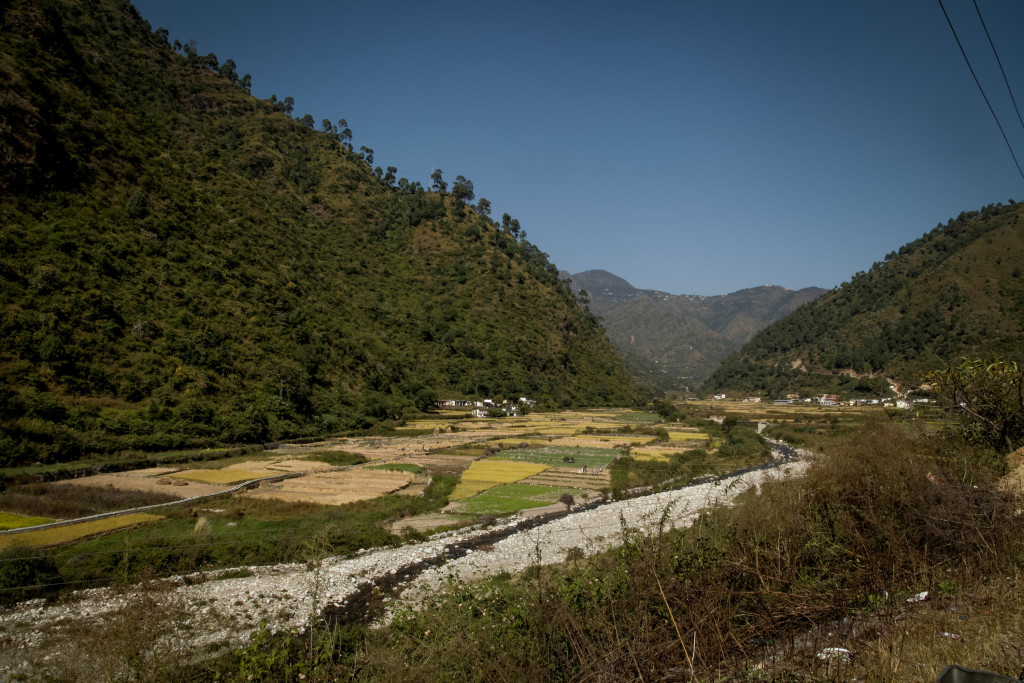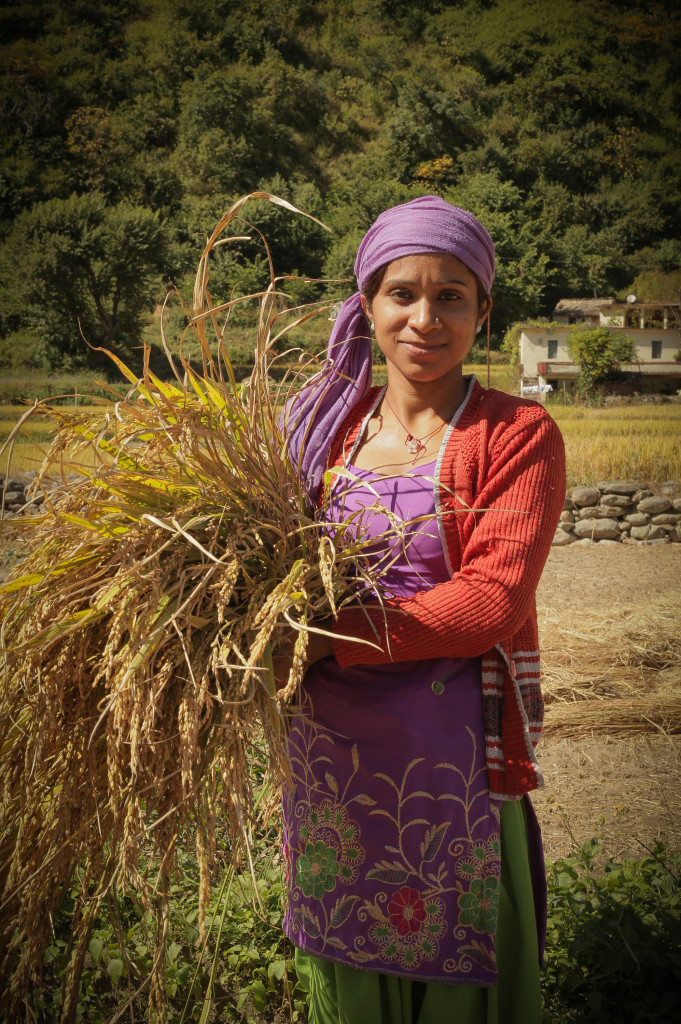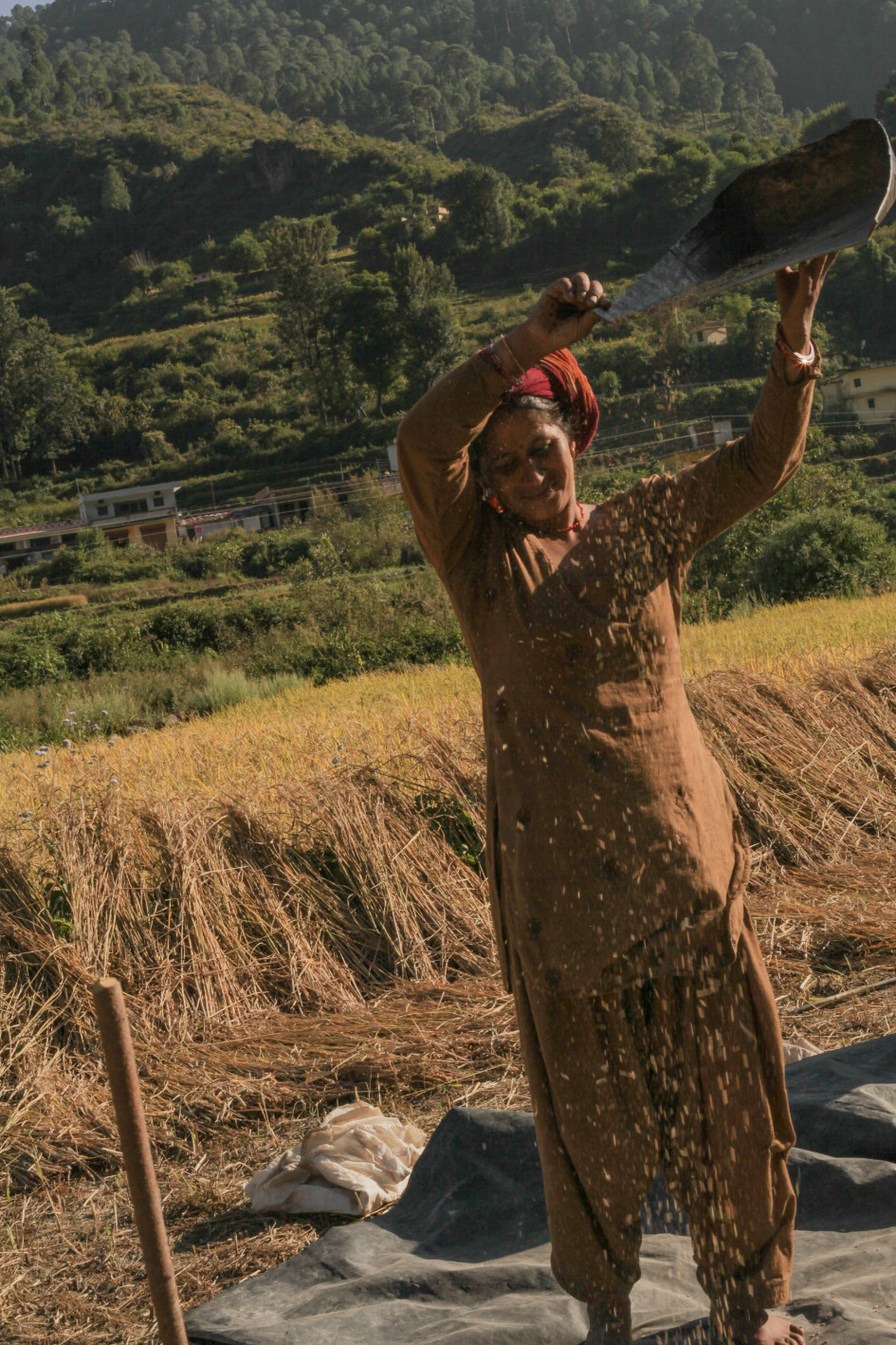 In the foothills of Tehri Garhwal, far from the hustle and life of the city, and improperly connected by roads and untouched by urbanization, lays a quaint village – Jardhar Gaon. I came here with my team to learn about the ingenuity behind one of the most sustainable methods of farming.
In the foothills of Tehri Garhwal, far from the hustle and life of the city, and improperly connected by roads and untouched by urbanization, lays a quaint village – Jardhar Gaon. I came here with my team to learn about the ingenuity behind one of the most sustainable methods of farming.
On reaching the village, we were welcomed by one of the leading activists of the Chipko Movement (Movement that practiced the Gandhian methods of satyagraha and non-violent resistance, through the act of hugging trees to protect them from being felled) in India, Vijay Jardhari. He is also celebrated for his ‘Beej Bachao Andolan’ (Save the Seeds Movement), which he started in the 1980’s.
A community driven movement
Beej Bachao Andolan was initiated to help farmers realize the importance of traditional farming and to safeguard them against debt and crop failure. Walking towards the field I was exposed to the world of small scale farmers (constituting almost 80% of all Indian farmers) where land holdings are below 2 hectares, and most agricultural practices are conducted manually. While women are cutting the crops, men use their feet to thresh rice.
Everyone works together to collect their new produce, and as an outsider they all seem happy. This new produce will provide them sustenance for next six months. Silmilarly to most places in India, small scale farming is community driven in Tehri Garhwal and not money intensive. Farmers help each other in turns in each other’s fields. This not only helps them save costs, but also keeps them in good health.
The magic of growing 12 grains together
Vijay Jardhari then took us further to his fields, where he practices mixed cropping, which is called Barahnaja in the local village languages. The traditional rain fed hill farming, Barahnaja (Barah-twelve, Anaja-Grains) means growing twelve or more crops in a synergetic combination. Along with food grains crops like pulses, oilseeds, vegetables, fibres, and spices are grown for optimal crop production.
 Jardhari explained that these crops were meticulously chosen and sowed keeping in mind the probability extreme weather events (which are very common in this area), availability of water, and nutrient value of soil. He showed us a patch of area which looked liked a complete mess but to my surprise he plucked and opened few pods from the crops and showed us exotic varieties of legumes, one of which is used to cure kidney stone I was pleasantly surprised to know all this. To read more about the pattern of crops grown in this region click here. While our pulses and vegetables in our cities were grown with dangerous pesticides, here is a farming practice which is innately healthy for people.
Jardhari explained that these crops were meticulously chosen and sowed keeping in mind the probability extreme weather events (which are very common in this area), availability of water, and nutrient value of soil. He showed us a patch of area which looked liked a complete mess but to my surprise he plucked and opened few pods from the crops and showed us exotic varieties of legumes, one of which is used to cure kidney stone I was pleasantly surprised to know all this. To read more about the pattern of crops grown in this region click here. While our pulses and vegetables in our cities were grown with dangerous pesticides, here is a farming practice which is innately healthy for people.
I wanted to know more about various crops and their value in Baranaja. Vijay Jadhari then showed us some varieties of millet which is resilient to droughts and hail storms and are ready in 90 days (less than the usual 150 days).
Another interesting aspect of Baranaja is its natural way of guarding itself from wild animals like boars and monkeys since they attack only certain species of crops, thus leaving behind other varieties for the farmers to eat.
While showing us around the fields, I observed Jardhariji examining each variety of crops carefully, plucking out the best branch and carefully putting it in his bag. Out of curiosity, I asked him the reason behind it, to which he explained that he was saving the best seed for the next year and by saving the seeds he did not only mean to save seeds but also to preserve, practice and promote traditional knowledge of farming which is sustainable and resilient to climate change.
A shift in perspective can go a long way
Nature has its own cycles like the nutrient cycle and water cycle that helps it rejuvenate. But lately humans have tampered these cycles with reckless use of technology. Extreme weather events like delayed monsoons, erratic rainfall, droughts, heat waves, and windstorms are direct outcome of this tampering. These climatic changes have also put our food security at risk.
It is high time that we realize the vulnerability of our current scenario and work to change it with sustainable solutions. Vijay Jardhari is right; Barahnaja is a solution that can help mitigate some of the challenges with food security that communities all over the world are confronted with.
Imagine if the policy makers pass and implement the concept of mixed farming and saving traditional seeds on a large scale, not only will we be able to resolve the problems of food security and farmers suicide in the country but also get access to healthy and nourishing food. In addition to this I also feel that a blend of traditional agriculture and modern machine tools will help improve efficiency at the farms. On all, this sustainable model of farming will be a win-win situation for both the technocrats and the farmers.
By Snigdha Mehta
To read more about this practice kindly refer to the following papers:
Sustainable Livelihoods and Lifestyles in Uttarakhand and associated Movements – click here.
Sequestering carbon through indigenous agriculture practices – click here
Status of an indigenous agro-forestry system in changing climate: A case study of the middle Himalayan region of Tehri Garhwal, India – click here

